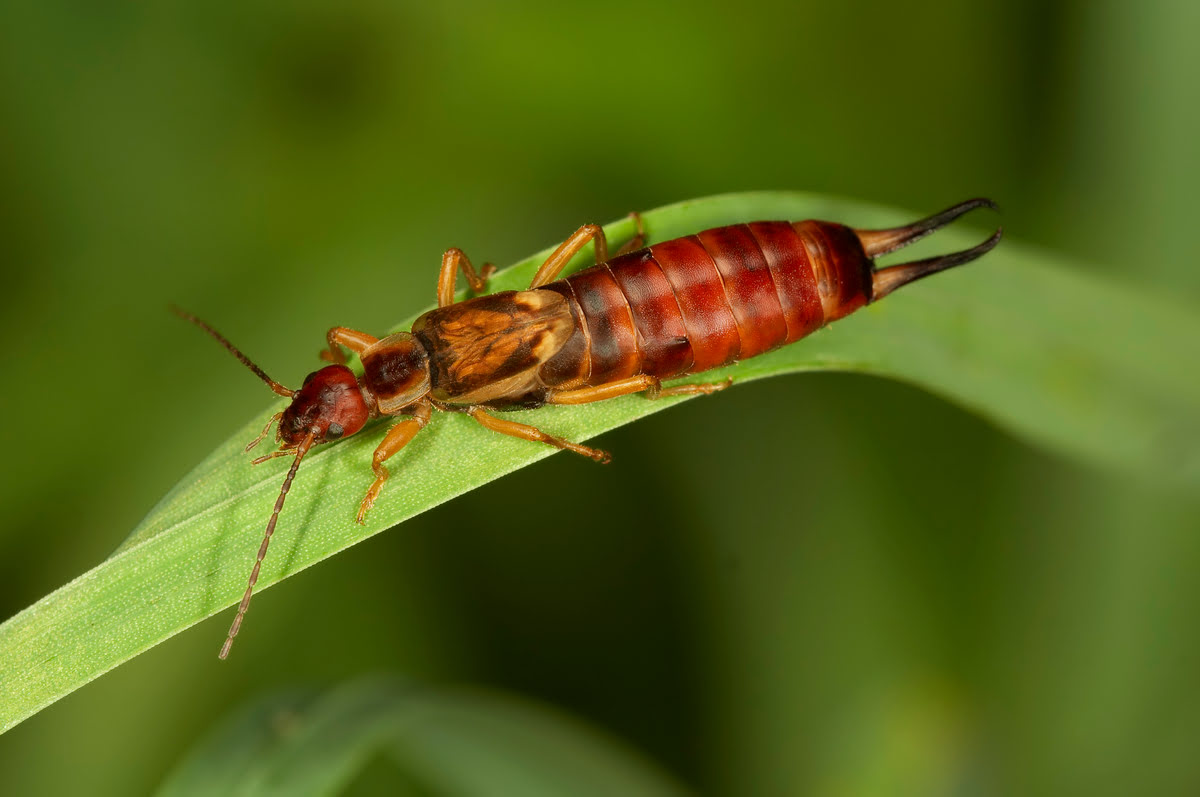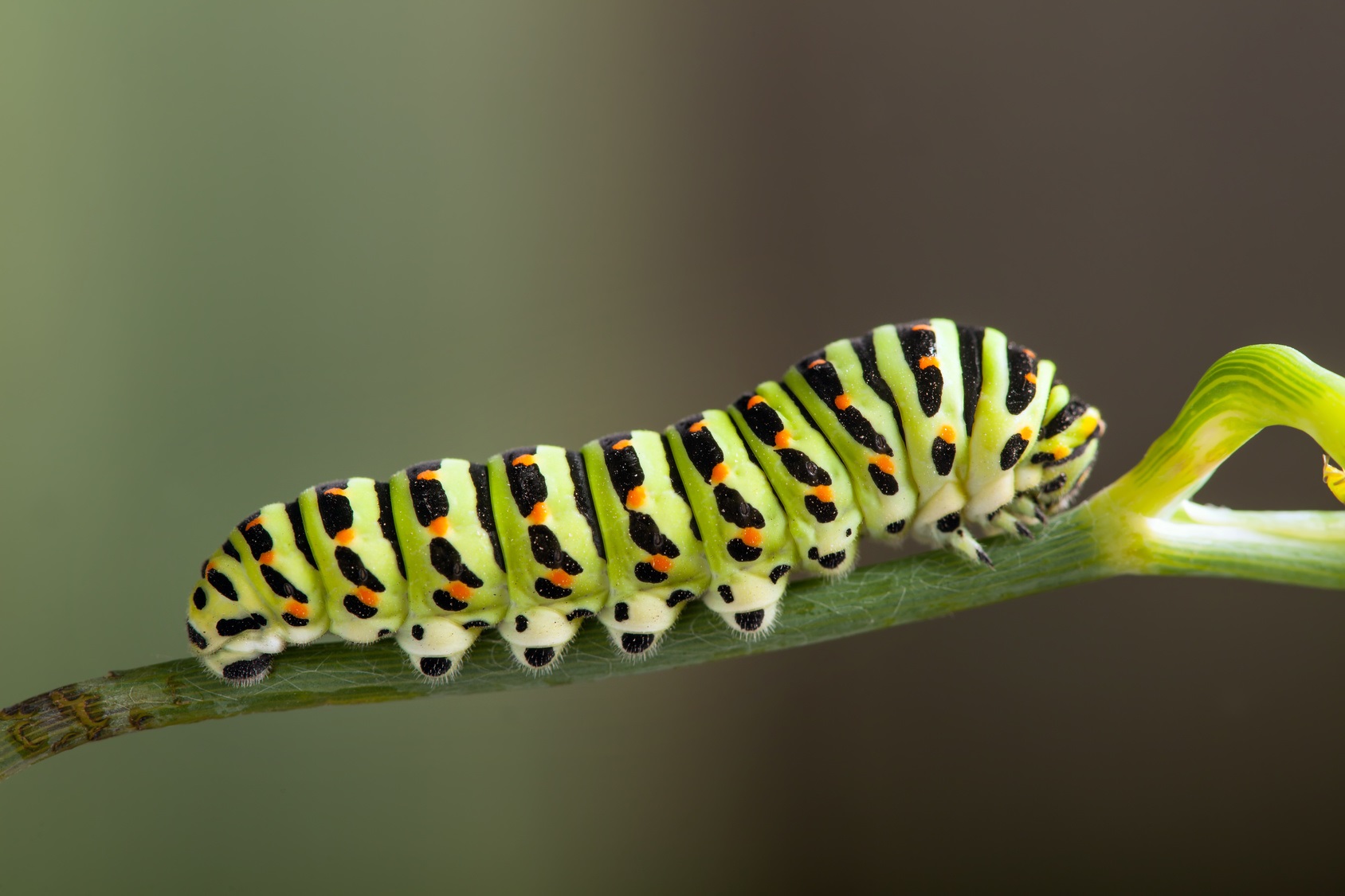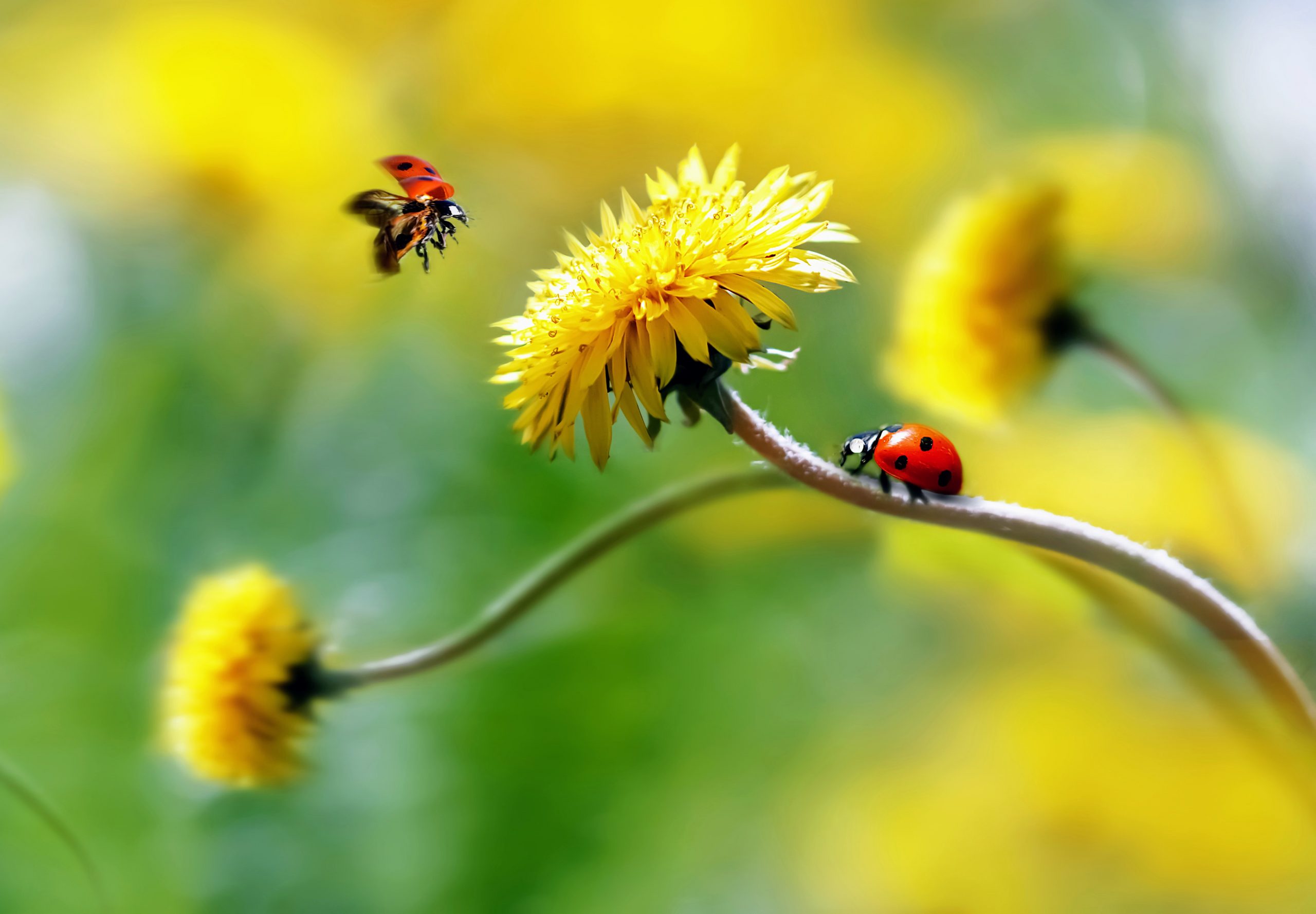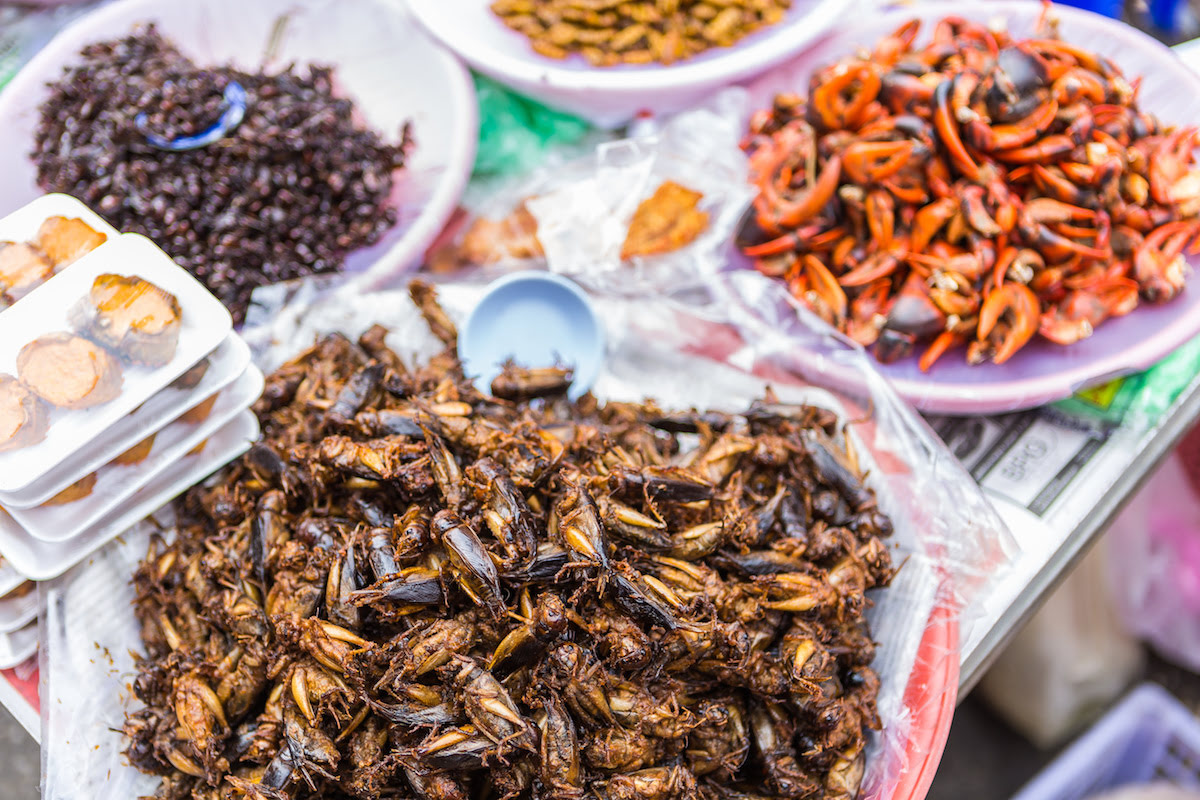Home>Gardening News and Trends>Latest News>What Insects Are Endangered


Latest News
What Insects Are Endangered
Published: December 9, 2023
Stay updated with the latest news on endangered insects. Discover why certain insect species are at risk and what we can do to protect them.
(Many of the links in this article redirect to a specific reviewed product. Your purchase of these products through affiliate links helps to generate commission for Chicagolandgardening.com, at no extra cost. Learn more)
Table of Contents
Introduction
Insects play a vital role in our ecosystems, serving as pollinators, decomposers, and a crucial food source for other organisms. Sadly, many insect species are currently facing the threat of endangerment. This alarming trend has significant implications for the overall health and balance of our ecosystems.
Endangerment can be caused by various factors, such as habitat loss, pesticide use, climate change, and pollution. As human activities continue to impact the environment, it is imperative that we take action to protect and conserve these valuable creatures.
In this article, we will explore the factors contributing to insect endangerment, highlight notable endangered insect species, discuss the threats they face, examine the conservation efforts being made, and emphasize the critical role that insects play in maintaining healthy ecosystems.
By shedding light on the challenges facing insects and the importance of their preservation, we hope to inspire a greater understanding and appreciation for these remarkable creatures and promote the urgent need for conservation.
Factors Contributing to Insect Endangerment
There are various factors that contribute to the endangerment of insect species around the world. Understanding these factors is crucial in order to implement effective conservation strategies. Here, we will discuss four main contributors to insect endangerment.
- Habitat Loss: One of the primary drivers of insect endangerment is the loss of habitat. As human populations expand, natural habitats are being destroyed or fragmented to make way for agriculture, urbanization, and infrastructure development. Insects rely on specific habitats for breeding, feeding, and shelter, and the destruction of these habitats greatly impacts their survival.
- Pesticide Use: The widespread use of pesticides in agriculture and pest control has had devastating effects on insect populations. Pesticides not only target the intended pests but also harm beneficial insects, including pollinators like bees and butterflies. The overreliance on pesticides and the use of highly potent chemicals have led to the decline of many insect species.
- Climate Change: The rapid changes in global climate patterns pose a significant threat to insect populations. Rising temperatures, altered rainfall patterns, and extreme weather events disrupt the delicate balance of ecosystems and impact insect life cycles, behavior, and distribution. Insects may struggle to adapt to these changes, leading to population declines and increased vulnerability to other threats.
- Pollution: Pollution, particularly air and water pollution, has detrimental effects on insects. Toxic pollutants released into the environment accumulate in insect habitats, contaminating their food sources and impacting their reproductive abilities. Additionally, light pollution disrupts the natural rhythms and behaviors of nocturnal insects, reducing their chances of survival.
While these factors are major contributors to insect endangerment, it is important to note that they often interact and exacerbate each other’s effects. Habitat loss, for example, can be intensified by the use of pesticides, leading to a rapid decline in insect populations.
Efforts to address these factors and mitigate their impact on insects are crucial for their conservation and the maintenance of healthy ecosystems. By understanding and addressing these challenges, we can work towards fostering a more sustainable future for both insects and humans.
Notable Endangered Insect Species
The endangerment of insect species is a pressing concern worldwide. Numerous diverse and fascinating insect species are currently at risk of extinction. Here, we highlight a few notable endangered insect species to underscore the urgency of their conservation.
- Monarch Butterfly (Danaus plexippus): Known for their iconic orange and black wings, Monarch butterflies are facing a significant decline in numbers. Their population has been severely impacted by habitat loss, climate change, pesticide use, and the loss of milkweed plants – their primary food source and breeding habitat.
- Rusty Patched Bumblebee (Bombus affinis): Once widespread across North America, the Rusty Patched Bumblebee is now critically endangered. Loss of prairie habitats, pesticide exposure, pathogens, and climate change are major threats to this vital pollinator species.
- Konza Prairie Ant (Formica obscuripes): This unique ant species, found in the tallgrass prairies of the United States, is facing population decline due to habitat loss caused by agriculture and urban development. The Konza Prairie Ant plays a crucial role in nutrient cycling and maintaining prairie ecosystem balance.
- Madagascar Jewel Beetle (Euchroea auripimenta): Endemic to the forests of Madagascar, this stunningly beautiful beetle is under threat from deforestation, habitat fragmentation, and illegal trafficking. The loss of its forest habitat puts this remarkable species at risk of extinction.
- Titan Beetle (Titanus giganteus): Considered one of the largest beetles in the world, the Titan Beetle is native to the rainforests of South America. Deforestation and illegal collection for the exotic pet trade are major threats to its survival.
These examples represent just a fraction of the many endangered insect species facing an uncertain future. The loss of these species would not only be a tragic loss of beauty and biodiversity but would also have far-reaching consequences for the ecosystems they inhabit.
Conservation efforts must prioritize the protection of these remarkable insects, ensuring the preservation of their habitats, implementing sustainable agricultural practices, and raising awareness about the importance of these species in maintaining ecosystem balance and functioning.
Threats to Insect Populations
Insects are facing a myriad of threats that are putting their populations at risk. Understanding these threats is crucial for devising effective conservation strategies. Here, we explore some of the primary challenges that insects are currently facing.
- Habitat Loss and Fragmentation: The destruction and fragmentation of natural habitats due to human activities, such as deforestation, urban development, and agriculture, are major threats to insect populations. Insects rely on specific habitats for breeding, feeding, and shelter, and the loss of these habitats disrupts their life cycles and can lead to population declines and even extinction.
- Pesticide Use: Widespread pesticide use, particularly insecticides, poses a significant threat to insect populations. These chemicals are designed to kill insects and can have unintended consequences, harming non-target species. Pesticides can disrupt the balance of ecosystems, negatively impacting insect pollinators, natural pest control agents, and other beneficial insects.
- Climate Change: The changing climate is altering the distribution and abundance of insect populations. Rising temperatures, changing rainfall patterns, and extreme weather events disrupt the delicate balance of ecosystems and impact insect behavior, life cycles, and interactions. Insects may struggle to adapt to these changes, resulting in declines or shifts in populations.
- Invasive Species: Invasive species can have detrimental effects on native insect populations. Invasive plants can outcompete native flora, reducing available food sources for native insects. Invasive predators or parasites can also have a substantial impact on insect populations, disrupting natural predator-prey relationships and causing declines in native species.
- Overcollection and Illegal Trade: The illegal collection and trade of rare and exotic insects for the pet trade or the collectors’ market pose a significant threat to certain species. Unsustainable collection practices can disrupt natural populations and risk the extinction of already vulnerable species.
These threats are interconnected and often have cumulative effects on insect populations. For example, habitat loss can be exacerbated by pesticide use, making it even more challenging for insects to thrive.
Conservation efforts must tackle these threats head-on by implementing measures such as protecting natural habitats, promoting sustainable agriculture practices, reducing pesticide use, combating the spread of invasive species, and raising awareness about the importance of insects in ecosystems.
Conservation Efforts for Endangered Insects
The alarming decline of insect populations has prompted the development of various conservation efforts aimed at protecting and preserving these imperiled species. Here, we highlight some of the key initiatives and strategies being implemented to safeguard endangered insects.
Habitat Protection and Restoration: Preserving and restoring natural habitats is crucial for the survival of endangered insects. Conservation organizations and government agencies are working to establish protected areas, such as national parks and nature reserves, to safeguard critical habitats. Additionally, habitat restoration projects aim to recreate or enhance suitable environments for endangered insects, promoting their survival and population recovery.
Reducing Pesticide Use: Recognizing the detrimental impact of pesticides on insect populations, efforts are being made to promote sustainable agricultural practices that minimize pesticide use. Integrated Pest Management (IPM) approaches are being adopted, which focus on using a combination of methods like crop rotation, biological control, and targeted pesticide application to reduce reliance on harmful chemicals and mitigate their impact on non-target insect species.
Pollinator-Friendly Initiatives: Given the critical role of pollinators in ecosystem functioning and food production, several initiatives are promoting pollinator-friendly practices. These include creating pollinator gardens, planting native flowering plants, and providing nesting sites for bees, butterflies, and other pollinating insects. Educational programs are also raising awareness about the importance of pollinators and steps individuals can take to support their conservation.
Captive Breeding Program: For some highly endangered insect species, captive breeding programs are being implemented as a last-ditch effort to save them from extinction. These programs involve breeding individuals in controlled environments like zoos or research facilities, with the goal of eventually reintroducing them into the wild once their habitat has been restored or threats have been mitigated.
Community Engagement and Education: Public involvement and awareness are vital for successful insect conservation. Community engagement programs, citizen science initiatives, and educational campaigns are being conducted to engage people in hands-on conservation efforts and increase understanding of the importance of insects in ecosystems. By inspiring individuals to take action, these initiatives can have a significant impact on insect conservation.
International Collaboration and Legislation: Insect conservation requires a global effort. International collaborations and agreements are established to address cross-border conservation challenges and implement legislation to protect endangered insects. These initiatives aim to regulate trade, combat illegal collection and trafficking, and promote conservation measures on a broader scale.
Conservation efforts are crucial in combating the ongoing decline of insect populations. By working together, implementing effective strategies, and raising awareness about the importance of these remarkable creatures, we can make a significant difference in protecting the future of endangered insects.
Role of Insects in Ecosystems
Insects are often referred to as the “little things that run the world,” and for good reason. They play a vital role in maintaining the balance and functioning of ecosystems. Here, we delve into the essential roles that insects fulfill in our natural environment.
Pollination: Insects, particularly bees, butterflies, and certain beetles, are crucial pollinators. They transfer pollen from the male parts of flowers to the female parts, enabling plants to reproduce. Approximately 80% of flowering plants depend on insect pollinators, and many agricultural crops rely on insect pollination as well. Without insects, the process of pollination would be severely disrupted, leading to a decline in plant diversity and reduced crop yields.
Decomposition and Nutrient Cycling: Insects play a significant role in breaking down organic matter and recycling nutrients. They feed on dead plants and animals, as well as fecal matter, breaking them down into smaller particles. This process of decomposition helps to release essential nutrients back into the soil, making them available for other organisms and facilitating the nutrient cycling process. Without insects as decomposers, organic matter would accumulate, impeding the natural flow of nutrients in ecosystems.
Natural Pest Control: Many insects act as natural pest controllers, preying on harmful insects that damage crops or spread diseases. Ladybugs, hoverflies, and praying mantises are just a few examples of beneficial insects that feed on pests, helping to keep their populations in check. By reducing the need for chemical pesticides, these natural predators contribute to sustainable and environmentally friendly pest management.
Food Source: Insects serve as a vital food source for numerous animals, including birds, reptiles, amphibians, and mammals. They form the base of many food chains and provide essential nutrients for predators higher up in the food web. Without insects, many species would struggle to find sufficient food, leading to disruptions in entire ecosystems.
Seed Dispersal: Some insects, such as ants and beetles, play a crucial role in seed dispersal. They collect and transport seeds to different locations as they forage, inadvertently aiding in plant reproduction and dispersion. This process helps to maintain plant diversity and supports the growth and dispersal of plant populations.
Ecosystem Engineers: Certain insects, such as termites and ants, are considered ecosystem engineers. They shape their environments by constructing intricate nests and burrows, aerating the soil, and facilitating water infiltration. These activities have a significant impact on soil health, nutrient distribution, and the overall structure of ecosystems.
The intricate interplay between insects and their environment highlights the indispensability of these tiny creatures. They are not mere nuisances but essential components of our ecosystems. Recognizing their vital roles is crucial for promoting their conservation and ensuring the long-term health and functioning of our natural world.
Conclusion
The endangerment of insect species is a matter of significant concern, as it not only threatens the survival of these remarkable creatures but also has far-reaching consequences for ecosystems and human well-being. Factors such as habitat loss, pesticide use, climate change, pollution, and illegal trade are contributing to the decline in insect populations worldwide.
Efforts are underway to address these threats and conserve endangered insects. Habitat protection and restoration, reducing pesticide use, promoting pollinator-friendly initiatives, captive breeding programs, community engagement, and international collaborations are all part of the comprehensive approach to safeguard these vital species.
The role of insects in ecosystems cannot be understated. They play a critical role in pollination, decomposition, nutrient cycling, natural pest control, act as a food source, facilitate seed dispersal, and even serve as ecosystem engineers. These diverse and essential roles highlight the interconnectedness of all living organisms and demonstrate the dependence we have on insects and the services they provide.
Preserving and sustaining insect populations is not only crucial for the continued health and biodiversity of our ecosystems, but it is also essential for our own well-being. By protecting and conserving endangered insects, we ensure the long-term stability of ecosystems, support food production, and contribute to a healthier and more sustainable future for all.
It is imperative that individuals, communities, governments, and organizations join forces to prioritize the conservation of these invaluable creatures. By raising awareness, adopting sustainable practices, supporting research, and advocating for insect conservation, we can make a significant difference in preserving the intricate web of life in which insects play a vital role.










